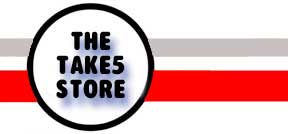End of Days: Mom & Pop Apple Mac Indie Dealers
While it is ingrained us all to cheer and root for the underdog and especially, in the retail business to try and encourage independent businesses, in particular “mom & pop” ones, there are certain realities of selling computers and especially Macs that might just mean that era is a bygone one.
Is it unfair when you are trying to build or maintain a business when Apple opens a gleaming two-story building 10-minutes away in the best part of town? Of course it is but that’s always been the business world – especially in America. We encourage everyone to open a successful business, expand to another location and then start sprouting up everywhere. Our taxes laws are written to encourage such thinking – businesses and corporations are offered more tax breaks and write-offs for further investment and expansion. Our financial system is set up for larger loans and eventually for stock IPO’s to bring in more investment at lower costs. You gain lower buying costs through volume and even your ad dollars are spread out over more outlets and that’s the situation as it stands now.
But the reality is that even CompUSA folded because the realities of the business has changed in the U.S. After three generations of computer buyers, along with the full power of the internet and the efficiencies of the global supply chain – you can literally order a custom made PowerMac, have it assembled in China, put on a plane and be in your hands in days. You can update the software in 10 minutes and buy every and any additional component without ever leaving the room other than to sign for your package.
THE MARKET NOW
Outside of the corporate/enterprise/education market, the market is fairly evenly divided. I would say 25% know exactly what computer they want to buy next. They know when the next Intel chip is coming or if the Mac upgrade cycle is nearing – they not only know the pulse of what’s happening – they are the pulse. If they were in college, they would be a Genius Bar employee.
There is another 35% who have a pretty good idea of what they want – while they cannot give you the exact chip speed of the Duo Core 2, they know enough not to pay $1,500 for a Celeron machine in 2007. This is Apple’s switcher target market. They can be convinced to switch because they want value for their money. While everyone likes to save a buck, this audience realizes that if you buy a PC laptop for $399, you do get what you pay for.
The remainder are budget buyers either because they like it there, because a PC is like a toaster, as long as it lets them surf the internet and write a note, they don’t feel the need to spend more – or they are budget minders because they just don’t have the income to spend more. Of course, some of it is short sighted – while Costco might cost you more money upfront, in the long run – it’s a much better deal.
Since the mass market days of the internet (circa 1998 to today), the PC marketplace has essentially evolved to serve everyone in the three stratas – this framework of information flow delivers enough information to all three markets: rumors, features, software, bundles and pricing – it’s all out in the open. If you don’t know something, you can ask around or you can look it up.
On the surface, the internet seemed to serve everyone but Apple noticed that a gap was developing. For people in the middle who were willing to spend more to get better value – the market was not really served. Everyone in the world was selling PC’s – you could go into Safeway and buy one – but they were treating the PC like ground beef. You looked at the cost per pound, the total cost and you eyeballed the freshness. There’s a giant stack of it on the warehouse floor, it’s “good enough.” Just grab one. Done.
And that’s how most of the computer retailers were selling computers. Read the little card, look at the screensaver – wooo, look, moving images! Or call over an employee – ask them a question – 90% of them would read you the little card back to you. Thanks, guy – I too am literate … or in their parlance, “I can read good.”
So manufacturers would pay retailers to sell their brand. They would gather up 20 of the employees, give them a PowerPoint presentation about why Meeco Computers was better than Delafonic Computers. Watch this video, we’ll give you a t-shirt, a McDonald’s gift certificate and we’ll pay you $20 for every Meeco Computer you sell this month! So, surprise, when you stepped into the retailer, everyone would tout this Meeco over HP. You don’t want that. Meeco – look at the screensaver, pretty huh? It’s the cheapest price per pound … er, I mean, you get 5 screensavers!
Of course, in two weeks, Delafonic Computers would come in, have them watch a video – give them a mousepad and $30 dollars for every computer they sold and surprise, “this is the I personally recommend.” Repeat, and repeat until you run out of PC manufacturers … which was never. So, instead of really helping consumers, store clerks were just bad mouthing the competition – and if you visited 4 stores over a month, no one was left un-battered and un-besmirched.
Apple of course had the most to lose – even when not hamstrung by slower Motorola/IBM chips, they didn’t have the resources or the interest to ply store clerks with mousepads and promises of more commission – they also had to compete against the real powerhouses of PC marketing:
Microsoft Windows & Intel.
Customers didn’t really care that much about the bad mouthing because all they wanted was the right price and if it ran Microsoft & was “from” Intel. And PC makers in a desperate attempt to make money was more than willing to get ad co-op from Intel (ad co-op is money rebated to the PC makers for featuring the Intel logo and the Intel ding).
NEXT MOVE
The mini stores within CompUSA was a start. Instead of their computers next to a cheap clone from Adjikistan – making the Macs seem way over-priced – they could create their own section staffed by an Apple “employee.” But it still wasn’t good enough as before anyone could get to the section, they were already told by other clerks not to buy __________ and of course, since it was not Windows and not Intel, it was not what everyone else was buying.
Sure, there were Mac indie dealers but how could they compete against Sears, CompUSA, Circuit City, and dozens of other stores. Of course, there were and there still are dozens of class A indie Mac retailers and if you still have one in town – great – but the majority were “mom & pop” operations scratching out a revenue stream. They just didn’t have the resources to compete. Go into an Apple store today – there are anywhere from 6-18 laptops, 6-18 iPods, 3-4 PowerMacs, monitors, printers, cameras, kids section … and that’s just the hardware!
Is it fair to ask a mom & pop store to spend $25 to 35k just on the latest hardware to demo? And to keep – what 5 of each machine in stock? And maybe 20 of every iPod? At the minimum? And to keep them all running at the same time AND be ready to answer dozens of questions per minute, know all the software and be able to repair things?
Who would demand all this? Us consumers. We have higher expectations also.

Who hasn’t seen this at a computer store?
I am not knocking all indie Mac stores – when done right, your local neighborhood computer store should be just that – convenient, friendly people who listens to what you really need to do, knowledgeable to help you resolve problems and casual – no pressure to buy – they are just there to help and there are still such stores all around the country …
But for most, the local indie computer store just became out-dated with older computers or broken computers – can’t really test out the latest iMovie because it’s only got iMovie 2 loaded and they either ignore you or because you are the only person in the store – browsing makes you feel guilty that you are not buying anything to support a local business.
So, in many ways – a corporate store takes away that factor – no one steps into a Best Buy or an Apple store feeling they have to buy something … in fact, the Apple stores seems to have no real restriction on how long you spend there playing around with the Macs, iPod or iPhone. They are there to answer questions and help guide you to make a decision. There are classes and others who can answer questions for you.
And that’s what Apple needed. A place where Macs could get a real showcase and because they could afford to spend $25-$50 just on hardware to stock the store and KEEP updating. Is it really fair to ask an indie store to spend another $8k to upgrade their demo machine from a 2.16 to a 2.4 GHz with a new screen? But as a CUSTOMER, you want to know if it feels faster and if the new LED screens are really nicer, right?
That’s just the price of doing business circa 2007 – you need resources to keep up. You need to be a big indie store like B&H or J&R or an online store like MacConnection to keep up because of the way the market works and consumer expectations.
So, of course, who doesn’t want to support a local business but a local business must also change with the times. Sometimes they just don’t have the resources to compete and yes, life and business is not always fair. Only the big corporations and chains can afford the high traffic locations in the best part of town but ultimately consumers decide. Is the store enticing to visit? (not just the stock but the way it’s stocked). Do I feel welcome to browse or am I made to feel I need to buy something?
So, keep in mind that businesses and times change – you just have to look at the cold hard world of discount retailing from Woolworth’s to Monty Wards to Sears to Kmart to Target and Wal-Mart – there is always someone else just around the corner trying to knock you down a peg or three … and consumers? We are fickle.
| « The State of Media Consumption: Multi-Tasking Millenials – Distracted or Connected? | Mike Huckabee bursts out of obscurity in new Iowa straw poll for Republicans » |





